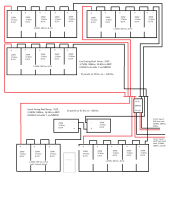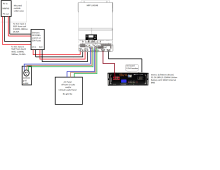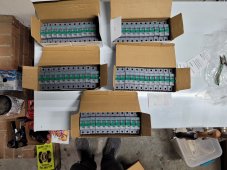My question: Hello Folks,
Looking forward to receiving the LV6548 and starting to plan my installation. In light of that I have a pressing question regarding the specs for the PV inputs in the manual, and especially the 18 Amps.
The manual states, " Check the input voltage of PV array modules. This system is applied with two strings of PV array. Please make sure that the maximum current load of each PV input connector is 18A."
There is a discussion about this on the DIYSolar forum in the following thread:
https://diysolarforum.com/threads/mpp-solar-lv6548.14840/page-20
User scottvanv states:
"Ok, definitive answer from Andy Y. with MPP Solar Support Team:
"Please don't worry. PV input current 22A is ok and it will not cause the unit damage. We suggest that please keep the max PV input current within 25A. Thank you."
Do you think I'm OK going with the 25Amps mentioned here? I'm bumping up against the 25A with my current plan:

These are used panels--I think it's unlikely they will be achieving specs. I have 26 of them to work with:
Specs:
Model: SS250P-60
Maximum Power: 250W
Open Circuit Voltage: 37.6 Voc
Voltage at Pmax: 30.3 VPmax
Short Circuit Current: 8.85A
Current @ Pmax: 8.27A
Max System Voltage: 600V
Fuse rating: 15A
Dimensions: 39" wide x 65" tall
Weight: 42 lbs
Another option would be to stick with 2 parallel strings and run 6S2P into each controller. It would be more challenging logistically with my available locations, but doable. The Voc of 6 in series would be 225.6 Voc. It does get cold here in Western KY, but not often. We had a cold sunny morning yesterday (lows in the teens). Neither location receives full sun in the winter until mid-morning.
Seems like I'm bumping up against Volts to use 24 panels in 6S2P into each input, or Amps for 25 panels with 5S3P for one of them and 5S2P for the other. I'd hate to drop it down to 5S2P for each input and only use 20 panels. But I also hate blowing things up...
What do you think?






